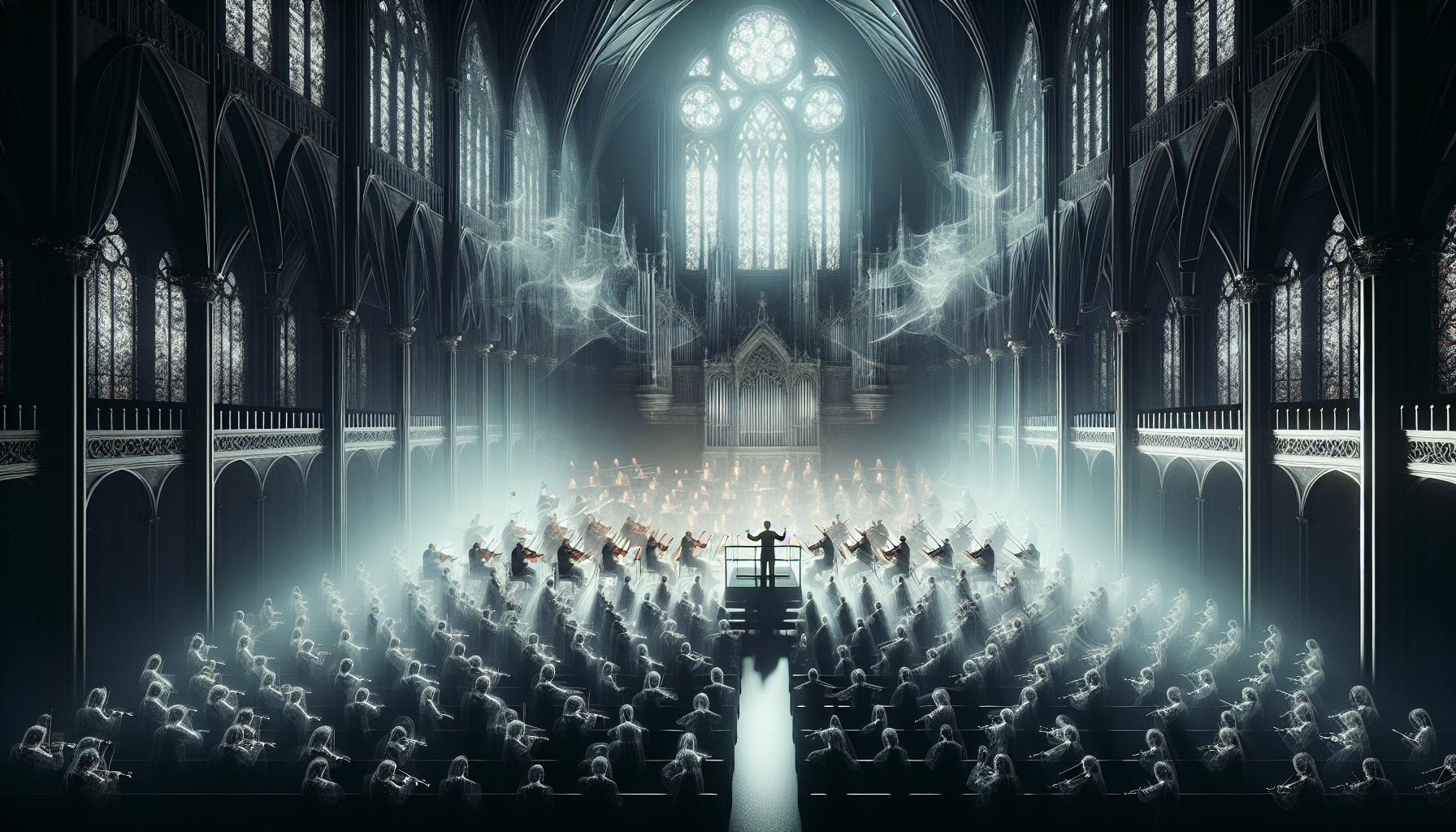Physical Address
304 North Cardinal St.
Dorchester Center, MA 02124

Classical music has the power to evoke deep emotions and create haunting atmospheres that send shivers down the spine. From eerie violin solos to thunderous orchestral crescendos composers throughout history have crafted pieces that tap into our primal fears and darkest imaginations.
These spine-chilling compositions often draw inspiration from supernatural themes Gothic literature and ancient folklore. Whether it’s Bach’s bone-chilling Toccata and Fugue in D minor or Saint-Saëns’s macabre Danse Macabre these masterpieces continue to captivate audiences and influence horror soundtracks today. From concert halls to horror films spooky classical music remains an essential tool for creating suspense and terror in modern entertainment.
Spooky classical music emerged during the Baroque period when composers started incorporating supernatural themes into their works. This musical tradition evolved alongside Gothic literature and folklore, creating a distinct genre that continues to influence modern horror soundtracks.
Gothic elements entered classical music through specific compositional techniques that mirror architectural features of Gothic cathedrals. Composers integrated:
The 18th-century Gothic Revival movement inspired composers like Franz Liszt to create works with dark themes:
| Composer | Notable Work | Gothic Element |
|---|---|---|
| Franz Liszt | Totentanz | Dance of Death |
| Robert Schumann | Ghost Variations | Supernatural visions |
| Hector Berlioz | Symphonie Fantastique | Witches’ sabbath |
Minor keys establish an unsettling atmosphere through their inherent tonal structure. Composers employ:
| Technique | Effect | Famous Example |
|---|---|---|
| Tremolo | Suspense | Mozart’s Don Giovanni |
| Staccato | Bone-rattling | Saint-Saëns’s Danse Macabre |
| Chromatic descent | Descent into madness | Bach’s Toccata and Fugue |

Classical music’s repertoire includes several compositions that evoke supernatural terror through intricate musical arrangements. These pieces demonstrate the genre’s capacity to create atmospheric tension through strategic use of musical elements.
Bach’s iconic organ composition emerged in the early 18th century as a masterpiece of Gothic musical architecture. The piece opens with three dramatic D minor chords followed by a cascading scalar passage that establishes its ominous tone. The composition’s structure features:
| Musical Element | Symbolic Representation |
|---|---|
| Solo Violin | Death’s Fiddle |
| Xylophone | Dancing Skeletons |
| Harp | Midnight Clock Strikes |
| Oboe | Rooster’s Morning Call |
Composers employ specific musical techniques to generate haunting atmospheres in classical compositions. These methodical approaches transform ordinary musical elements into powerful tools for evoking fear and unease.
The tritone interval, known as diabolus in musica (the Devil’s interval), spans three whole tones in the musical scale. Medieval composers avoided this dissonant interval due to its jarring sound, which creates immediate tension in compositions. Notable examples include:
Silence functions as a powerful compositional tool in creating suspense and anticipation. Strategic placement of rests includes:
| Composition | Composer | Silent Technique |
|---|---|---|
| Symphony No. 94 “Surprise” | Haydn | Sudden silence before fortissimo |
| 4’33” | John Cage | Complete silence as composition |
| Requiem in D minor | Mozart | Strategic pauses between chorus |
Classical music serves as a cornerstone of horror film soundtracks, with composers and filmmakers utilizing established orchestral works to heighten tension and create memorable scares. The combination of classical compositions with visual horror elements creates a powerful synergy that enhances the viewer’s emotional response.
Stanley Kubrick’s “The Shining” features Béla Bartók’s “Music for Strings, Percussion and Celesta” to create an atmosphere of psychological terror. “A Clockwork Orange” employs Beethoven’s “Ninth Symphony” as a disturbing backdrop for scenes of ultraviolence. Here are other notable examples:
Classical music enhances horror through specific musical techniques:
| Musical Element | Psychological Effect | Example in Horror Films |
|---|---|---|
| Tritone Interval | Creates immediate tension | “The Exorcist” theme |
| Tremolo Strings | Generates suspense | “Psycho” shower scene |
| Diminished Chords | Evokes uncertainty | “Dracula” (1931) |
| Sustained Notes | Builds anticipation | “Alien” (1979) |
Contemporary composers redefine spooky classical music through digital technology, innovative orchestration, and cross-genre experimentation. These modern adaptations preserve the haunting essence of traditional compositions while introducing fresh elements that resonate with current audiences.
Modern classical composers create horror scores that blend traditional orchestral elements with experimental techniques. Hans Zimmer’s score for “Crimson Peak” incorporates Gothic romantic themes with electronic undertones. Michael Abels’ “Us” soundtrack features haunting children’s choirs combined with modernist orchestration. These contemporary works employ:
| Composer | Notable Work | Innovation |
|---|---|---|
| Hans Zimmer | Crimson Peak | Gothic-electronic fusion |
| Michael Abels | Us | Choral-orchestral horror |
| Mica Levi | Under the Skin | Microtonal dissonance |
| Johnny Greenwood | There Will Be Blood | Textural experimentation |
Digital artists transform classical horror pieces through electronic manipulation. Notable examples include:
Modern production techniques enhance the supernatural elements:
These remixes create new sonic landscapes while maintaining the original compositions’ eerie atmosphere.
Spooky classical music stands as a testament to the genre’s enduring power to evoke fear and fascination across centuries. From Bach’s haunting masterpieces to modern horror film scores these compositions continue to send shivers down listeners’ spines. The fusion of traditional orchestral elements with contemporary production techniques has breathed new life into this timeless genre.
The legacy of Gothic-inspired classical music lives on through innovative interpretations and creative adaptations. Today’s composers and artists draw from this rich history while pushing boundaries with digital technology and cross-genre experimentation. This musical tradition remains as powerful and relevant as ever proving that the art of musical fear is truly timeless.